Karcher SHD-R 3000 User Manual
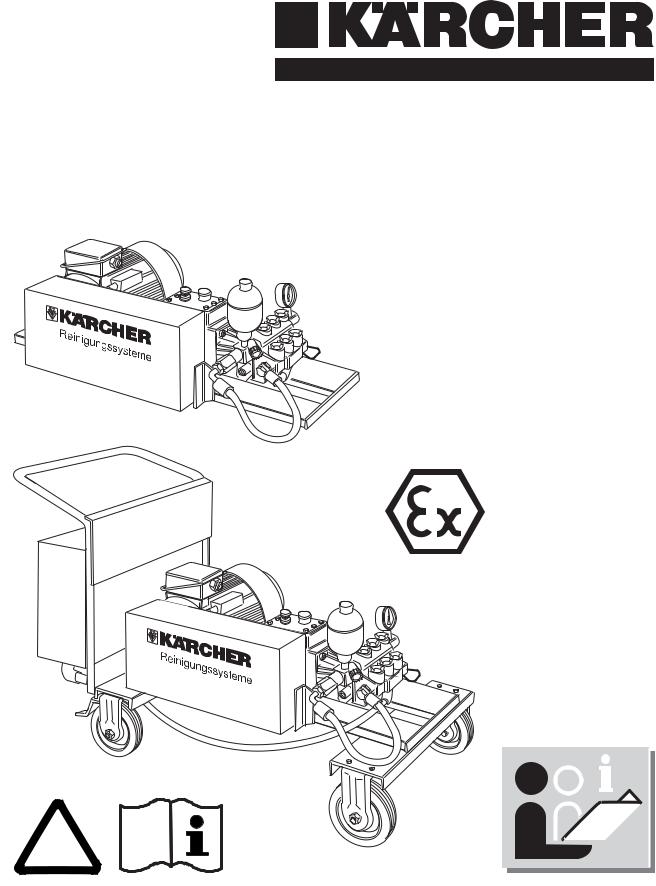
SHD-R 3000
Betriebsanleitung
!
www.karcher.com |
5.956-486 A2005937 (06/03) |
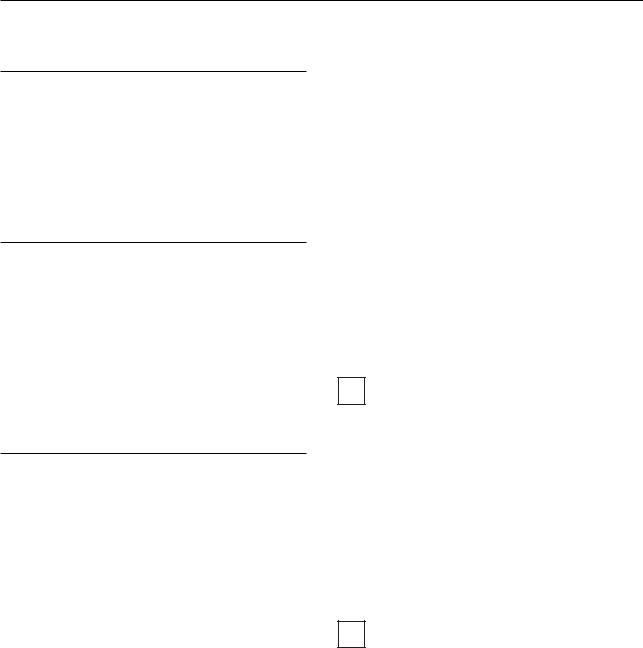
Operating Instructions
To be handed to the operator
Read these instructions carefully before starting up the unit
Retain for future reference
Notes about these operating instructions
Before starting up the interior cleaner for the first time, please carefully read through these instructions. In particular, you should note all the safety information. Store these instructions in a safe place for future use.
For whom are these instructions intended
All users
Users are persons who have received instruction on how the system functions, operators and trained specialists.
Trained specialists
Trained specialists are persons who are professionally qualified to install and commission this type of system.
Environmental protection
Please dispose of the packaging in an environmentally friendly way.
The packaging materials are recyclable. Please do not throw the packaging into the domestic waste but in the appropriate recyclable waste collection containers instead.
Please dispose of old units in an environmentally friendly way
Old units contain valuable recyclable materials, which should be reused. You should never allow oil and similar materials to get into the environment. Therefore, please dispose of old units via suitable collection systems.
Cleaning liquids
Please do not allow them to get into the environment. Please protect the soil and dispose of waste oil in an environmentally friendly way.
Waste water containing mineral oil (i.e. petrol, etc.)
Please do not allow this waste water to get into the ground, bodies of water or the sewers.
Mineral oil in the high-pressure pump
Mineral oil is used to lubricate the highpressure pump. The waste oil resulting from an oil change, any oil and water mixture that may occur, and rags that have been soaked in oil should be delivered to a proper collection point for disposal.
i Important!
Waste oil may only be disposed of by the operators of special collection points. Please deposit your waste oil at one of these locations. Polluting the environment with waste oil is a criminal offence.
Detergents
KÄRCHER detergents possess demulsifying properties (ASF). This means that they do not interfere with the function of an oil separator.
i Important
These instructions contain descriptions of different types of system, accessory kits and other supplementary components.
There are significant differences between the various parts so that you should not encounter any problems with identifying all the parts in your particular type of system.

SHD-R 3000 |
Table of contents |
English |
A. For your safety
1.Safety information and instructions
2.Noise protection
3.Authorized operators
4.Personal protective equipment
5.Emergency drill
6.Safety devices
7.Applicable regulations
8.Using the system for its intended purpose
9.Special conditions in hazardous area
10.Schematic diagram of area classification
11.Area classification
B.Types of system, and operating information
1.Types of system
2.System start-up
3.System shut-down
C.System functions
D.Technical specifications
E. Care and maintenance
1.General information
2.Maintenance schedule
3.Maintenance tasks
F. Troubleshooting
1. Fault-finding
G. Mounting kits and accessories
1.Mounting kits (non-hazardous area)
2.Mounting kits (hazardous area)
3.Accessories
H.Warranty
I.System installation
J.Declaration of Conformity
K.Test record
5.956-486 A2005937 (06/03) |
1 |
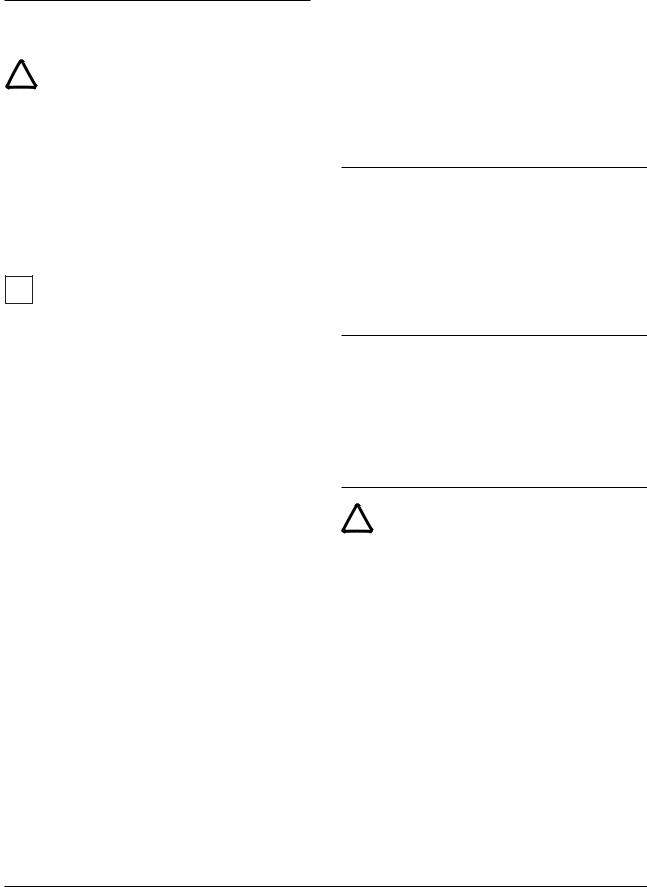
English |
A. For your safety |
SHD-R 3000 |
1.Safety information and instructions
The following symbols are used throughout these Operating Instructions:
!Danger!
Denotes an immediate and present danger. Failure to observe this notice could lead to severe injury or death.
 Caution!
Caution!
Denotes a potentially hazardous situation. Failure to observe this notice could lead to minor injuries or damage to property.
i Important!
Denotes operating hints and important information.
Errors in operation or misuse can result in danger to the operator or other persons due to:
high water pressure,
hot liquids,
high voltages,
detergents and solvents,
Explosion hazard.
In order to avoid errors in operation or potentially dangerous situations, read the following before starting the system up for the first time:
all safety information in the enclosed brochure "Safety information for highpressure cleaning units" No. 5.951-949,
these operating instructions,
the legal requirements that are currently applicable in your country.
All persons charged with the installation, commissioning, operation, maintenance or service of the machine are required:
to be appropriately qualified,
to read and observe these operating instructions,
to be aware of and observe associated regulations.
2. Noise protection
The sound level generated by the system is 80 dB(A).
A noise hazard can occur if the water jet is directed at resonating components (e.g. large metal panels). In this case a hearing protection device must be worn.
3. Authorized operators
The operation of the system is restricted to persons over the age of 18 who have received proper instruction as to how this system is to be used (For exceptions for trainees see BGV D15 Art. 6).
4.Personal protective equipment
!Danger!
Health hazard due to cleaning fluids.
Wear the prescribed protective equipment for the cleaning liquid to be used, e.g.
protective clothing/overalls,
protective goggles or face mask,
watertight gloves,
watertight shoes.
A1 |
5.956-486 A2005937 (06/03) |

SHD-R 3000 |
A. For your safety |
English |
5. Emergency drill
Turn mains supply voltage off at system master switch.
Turn off supply of cleaning liquid.
If a handgun is being used, release any remaining pressure in the system by pressing the lever on the handgun.
6. Safety devices
Safety valve
!Danger!
Injury hazard due to excessive pressure within system. Do not adjust safety valve. The safety valve has been preset and sealed in the factory. Adjustments should only be made by a Kärcher Customer Service engineer.
7. Applicable regulations
Accident prevent regulations
Working with liquid sprayers BGV D15.
If water is used as the cleaning liquid:
Observe local regulations for disposal of waste water.
Waste water should be directed into the main drainage system in accordance with local regulations.
If the water to be used is drawn from the main supply network:
Install a mains disconnector to EN 1717 (e.g. float tank with float valve),
BetrSichV (industrial safety regulations).
If acids, alkaline solutions or solvents are to be used:
Observe the legal requirements that are currently applicable in your country. In Germany the regulations of the industrial employer's liability insurance associations apply (BGI 504).
Observe instruction leaflets provided by manufacturers of the detergent concentrates that are to be used with this system.
iImportant!
According to the UVV (accident prevention) Guidelines (BGV D15, Art. 23), highpressure sprayers must be checked by an expert with the initial startup and at least every 12 months thereafter. Kärcher Customer Service engineers are qualified to carry out the prescribed tests on your system.
The results of the test procedures must be recorded in writing. A form into which the test results can be entered is shown in Chapter K: Test Record.
5.956-486 A2005937 (06/03) |
A2 |
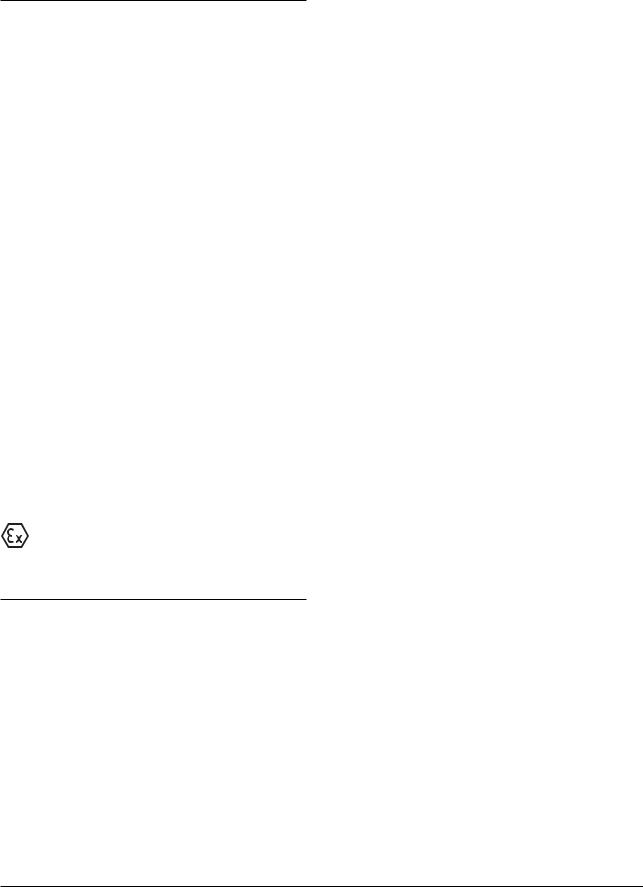
English |
A. For your safety |
SHD-R 3000 |
8.Using the system for its intended purpose
This system is used for pumping a cleaning liquid at high-pressure, for the purpose of:
with the handgun attached – cleaning containers, boxes, cases and equipment parts, etc.
with the interior cleaner attached – cleaning enclosed containers, drums, barrels, etc.
Cleaning the following is considered to be contrary to the intended purpose, and is strictly forbidden:
Persons and animals
The high-pressure jet represents a serious injury hazard.
Loose objects
Such items could be catapulted away by the high-pressure jet, causing damage to property or injury to persons.
If water is used as the cleaning liquid, the system must be protected against freezing temperatures. Damage could be caused if water freezes inside the system.
9.Special Conditions in a hazardous area
1.The pump may only be used in zones which correspond to the type of explosion protection given on the rating plate.
2.The cleaning liquid must not contain more than 1% by weight of undissolved solids.
3.The interior cleaner must be electrostatically grounded.
4.The cleaning liquid pump may only be run if it is filled with liquid.
5.The nominal pressure of the pump must not exceed 50 bar when used with solvents.
6.The pump's flow rate must not exceed
50l/min when used with solvents.
7.The operating temperature of the cleaning liquid, made up of water with cleaning agent, must not exceed 60 °C.
8.The operating temperature of the cleaning liquids must not exceed 20 °C where solvents, lyes (alkali solutions) and acids are used.
9.The pump must be inspected after a reasonable operating time to ensure it has a faultless condition and function (among other things, bearings for wear, pump for leaks, tension in the V-belt). Repair if necessary.
10.The pump may only be operated with cleaning liquids against which the materials from which the pump is made have adequate resistance.
11.Cleaning liquids, which contain combustible solvent fractions, must correspond to the temperature classes IIA and IIB. Solvents in the temperature class IIC must not be sprayed.
12.The pump may only be operated in Zone
1during cleaning. Ensure compliance with the conditions applicable within the scope of the BetrSichV (industrial safety regulations) and other national conditions.
13.Hoses must be electrostatically conductive (resistance R < 1 MΩ ).
14.Only use cleaning liquids with a conductivity G > 1000 pS/m.
15.All parts in contact with the media are to be connected to the earth connection system.
16.The electric motor used must have a prescribed type testing certificate to 94/9/EC.
A3 |
5.956-486 A2005937 (06/03) |

SHD-R 3000 |
A. For your safety |
English |
10. Schematic diagram of area classification
5.956-486 A2005937 (06/03) |
A4 |
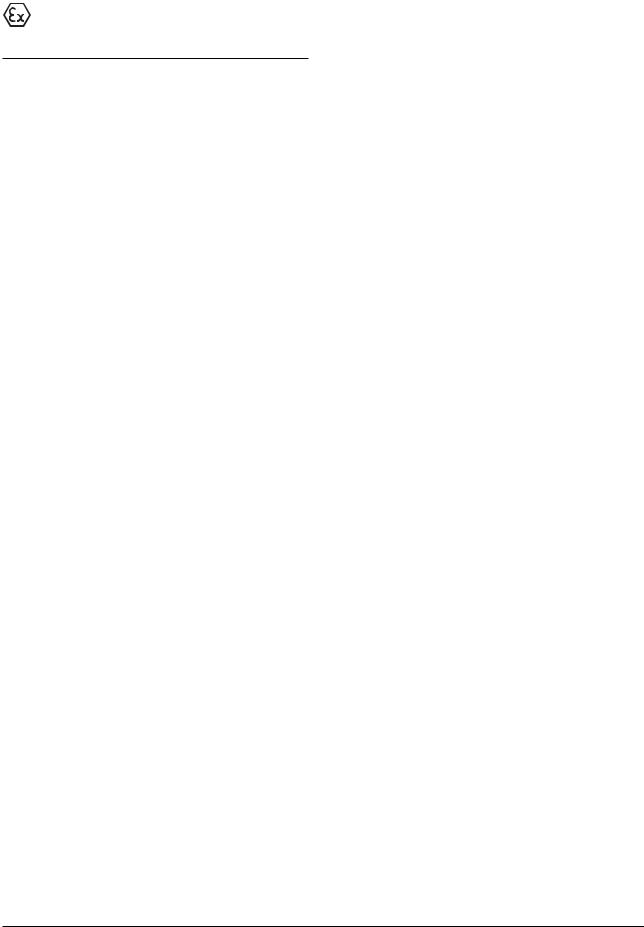
English |
A. For your safety |
SHD-R 3000 |
11. Area Classification
In the BetrSichV and EN 1127-1, hazardous (potentially explosive) areas are classified into zones according to the frequency and duration of the occurrence of hazardous, potentially explosive atmospheres.
It is the responsibility of the owner/ operator to define these zones.
Notes on area classification are given in the BetrSichV, EN 1127-1, BGR 104 - ExGuidelines of BG Chemie and in
DIN EN 60 079-10.
Zone 0
is an area in which hazardous, potentially explosive atmospheres exists constantly, for long periods of time or frequently as a mixture of air and combustible gases, vapours or mists.
Zone 1
is an area in which hazardous, potentially explosive atmospheres consisting of a mixture of air and combustible gases, vapours or mists can occasionally form during standard operation.
Zone 2
is an area in which hazardous, potentially explosive atmospheres consisting of a mixture of air and combustible gases, vapours or mists do not normally occur during standard operation or only for a short time.
Zone 20
is an area in which hazardous, potentially explosive atmospheres in the form of a cloud of combustible dust contained in the air exist constantly, frequently or for long periods of time.
Zone 21
is an area in which hazardous, potentially explosive atmospheres in the form of a cloud of combustible dust contained in the air can occasionally form during standard operation.
Zone 22
is an area in which hazardous, potentially explosive atmospheres in the form of a cloud of combustible dust contained in the air do not form during standard operation or only for a short time.
A5 |
5.956-486 A2005937 (06/03) |
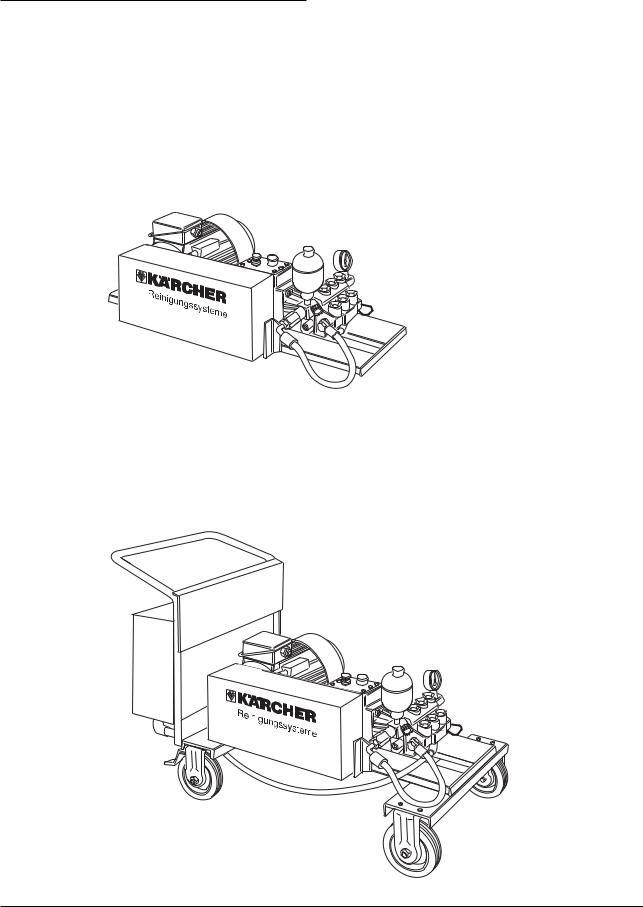
SHD-R 3000 B. Types of system, and operating information |
English |
1. Types of system
Static or mobile systems
The static system
is intended to be installed on a base,
has been mounted onto a rigid steel frame,
is most suitable for use in conjunction with fixed-installation high-pressure lines.
The mobile system
has been mounted onto a trolley,
can be used in different locations.
5.956-486 A2005937 (06/03) |
B1 |

English |
B. Types of system, and operating information SHD-R 3000 |
||||
|
|
|
|
|
|
Cleaning liquids |
|
|
|
||
|
|
|
|
|
|
Type of system |
Cleaning liquid |
Working |
Comments |
||
(see rating plate) |
|
pressure/ |
|
||
|
|
|
|
Pressure |
|
|
|
|
|
setting for |
|
|
|
|
|
safety valve |
|
|
|
|
|
[bar] |
|
|
|
|
|
|
|
SHD-R 3000 (F) |
- Water |
50/65 |
Standard version |
||
|
|
|
- VE-water* |
|
|
|
|
|
- Water with |
|
|
|
|
|
Kärcher-RM |
|
|
|
|
|
|
|
|
SHD-R 3000 (F) S |
- Water |
85/100 |
Standard version with |
||
|
|
|
- VE-water* |
|
increased working pressure |
|
|
|
- Water with |
|
|
|
|
|
Kärcher-RM |
|
|
|
|
|
|
|
|
SHD-R 3000 (F) SVA |
- Water |
85/100 |
Pump parts that come into |
||
|
|
|
- VE-water* |
|
contact with the cleaning liquid |
|
|
|
- Water with |
|
are made from stainless steel. |
|
|
|
Kärcher-RM |
|
|
|
|
|
|
|
|
VE |
Fully demineralised water |
|
|
||
|
|
|
|
|
|
* |
Conditionally resistant, use possible, however Cu and Zn ions in the medium |
||||
|
|
|
|
|
|
RM |
RM Alkali cleaning agent: e.g. RM31 (max. 0 - 2%) |
|
|||
|
Acidic cleaning agent: e.g. RM25 (max. 0 - 1%) |
|
|||
|
Max. temperature + 60˚C |
|
|
||
|
(Higher temperatures available on request - precompression pump required!) |
||||
|
|
|
|
|
|
(F) |
Mobile system |
|
|
|
|
|
|
|
|
|
|
Other cleaning liquids may only be used after being released by Kärcher!
B2 |
5.956-486 A2005937 (06/03) |
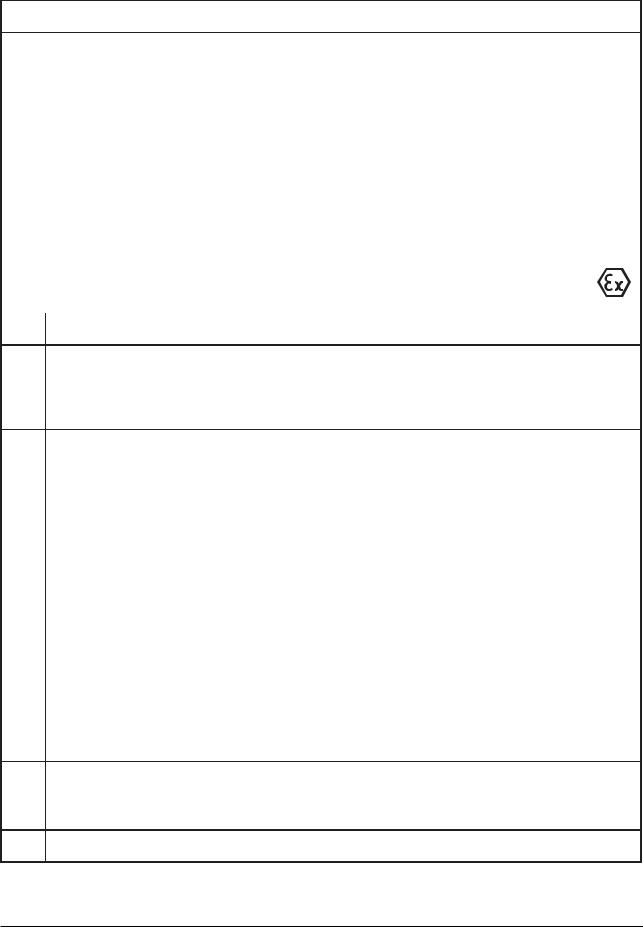
SHD-R 3000 B. Types of system, and operating information |
English |
Cleaning liquids
Type of system |
Cleaning liquid |
Working |
Comments |
(see rating plate) |
|
pressure/ |
|
|
|
Pressure |
|
|
|
setting for |
|
|
|
safety valve |
|
|
|
[bar] |
|
|
|
|
|
SHD-R 3000 (F) SSR |
- Water |
85/100 |
- The pistons are made |
|
- VE-water |
|
from ceramic materials, |
|
- Water with |
|
other pump parts that |
|
Kärcher-RM |
|
come into contact with |
|
- Acids 1) |
|
acids are made from |
|
- Alkali |
|
stainless steel. |
|
solutions 2) |
|
- Ex-versions possible. |
|
|
|
|
VE |
Fully demineralised water |
RM RM Alkali cleaning agent: e.g. RM31 (max. 0 - 2%) Acidic cleaning agent: e.g. RM25 (max. 0 - 1%) Max. temperature + 60 ˚C
(Higher temperatures available on request - precompression pump required!)
1)
 Caution!
Caution!
Increased material removal in hydrochloric and sulphuric acid, therefore rinse/neutralise immediately after use!
Reduced resistance against contaminated acids! If necessary contact Kärcher!
Acids (max. temperature + 20 ˚C)
Nitric acid max. 10%
Acetic acid max. 10%
Formic acid max. 10%
Phosphoric acid max. 10%
Citric acid max. 10%
Sulphuric acid max. 0.5%
Hydrochloric acid max. 0.5%
2)Sodium hydroxide solutions max. 10%, without hypochlorite fractions (max. temperature + 20 ˚C)
Potassium hydroxide max. 10%, without hypochlorite fractions (max. temperature + 20 ˚C)
(F)Mobile system
Other cleaning liquids may only be used after being released by Kärcher!
5.956-486 A2005937 (06/03) |
B3 |

English |
B. Types of system, and operating information SHD-R 3000 |
Cleaning liquids
Type of system |
Cleaning liquid |
Working |
Comments |
|
(see rating plate) |
|
pressure/ |
|
|
|
|
Pressure |
|
|
|
|
setting for |
|
|
|
|
safety valve |
|
|
|
|
[bar] |
|
|
|
|
|
|
|
SHD-R 3000 (F) SLA |
– Water |
85/100 |
– |
Version with increased |
|
– VE water* |
|
|
working pressure. |
|
– Water with |
|
– Leaked liquid is collected in |
|
|
Kärcher-RM |
|
|
a pipe (leakage recycling). |
|
|
|
|
|
|
– Alkali |
|
– Ex-versions possible. |
|
|
solutions2) |
|
||
|
|
|
|
|
SHD-R 3000 (F) LM |
– Water |
50/65 |
– |
Explosion-proof version. |
|
– VE water* |
|
– Leaked liquid is collected in |
|
|
– Water with |
|
|
a pipe (leakage recycling). |
|
Kärcher-RM |
|
– Additional pressure switch as |
|
|
|
|
safety device (optional). |
|
|
– Alkali |
|
|
|
|
|
|
|
|
|
solutions 2) |
|
|
|
|
– Solvents 3) |
|
|
|
VE Fully demineralised water |
|
|
|
|
*Conditionally resistant, use possible, however Cu and Zn ions in the medium
RM Acidic cleaning agent: e.g. RM25 (max. 0 - 1%) Max. temperature + 60˚C
(Higher temperatures available on request - precompression pump required!)
2)Sodium hydroxide solutions max. 10%, without hypochlorite fractions (max. temperature + 20 ˚C)
Potassium hydroxide max. 10%, without hypochlorite fractions (max. temperature + 20 ˚C)
3)Solvents (max. temperature + 20 ˚C)
1.Hydrocarbons, e.g.: petroleum
2.Aromatic compounds, e.g.: benzene, toluol
3.Ketones, e.g.: MEK (methyl ethyl ketones), acetone
4.Esters, e.g.: butyl acetate, methyl acetate
5.Glycols, e.g.: butyl glycol
6.Mixed solvents, e.g.: butyl acetate 85, isobutyl acetate 85 (85=85% butyl acetate + 15% n-butanol)
7.Regenerates, distillates made from various solvents which have already been used for cleaning purposes or similar.
(F)Mobile system
Other cleaning liquids may only be used after being released by Kärcher!
B4 |
5.956-486 A2005937 (06/03) |
